
- Home
- News
- Analysis
- States
- Perspective
- Videos
- Education
- Entertainment
- Elections
- World Cup 2023
- Features
- Health
- Budget 2024-25
- Business
- Series
- NEET TANGLE
- Economy Series
- Earth Day
- Kashmir’s Frozen Turbulence
- India@75
- The legend of Ramjanmabhoomi
- Liberalisation@30
- How to tame a dragon
- Celebrating biodiversity
- Farm Matters
- 50 days of solitude
- Bringing Migrants Home
- Budget 2020
- Jharkhand Votes
- The Federal Investigates
- The Federal Impact
- Vanishing Sand
- Gandhi @ 150
- Andhra Today
- Field report
- Operation Gulmarg
- Pandemic @1 Mn in India
- The Federal Year-End
- The Zero Year
- Premium
- Science
- Brand studio
- Home
- NewsNews
- Analysis
- StatesStates
- PerspectivePerspective
- VideosVideos
- Entertainment
- ElectionsElections
- Sports
- Loading...
Sports - Features
- Budget 2024-25
- BusinessBusiness
- Premium
- Loading...
Premium
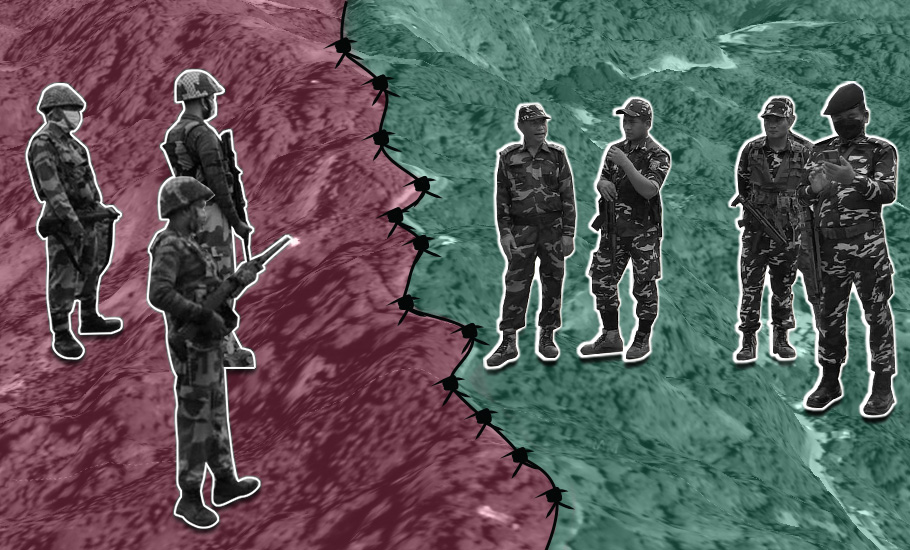
Assam-Mizoram border row: How lives changed for villagers on both sides
Assam and Mizoram governments did not look much bothered about the villagers' livelihood aspect of the conflict.

Rintu Chakma’s momos were in great demand on either side of the Assam-Mizoram border. The fast-food seller from Lailapur in Assam regularly supplied his famed steamed dumplings with chicken and vegetable stuffing to nearby Mizo villages and towns within the 10-km radius of his kitchen. But that was before July 26 happened. On that ill-fated day, Chakma said, he was ferrying injured people...
Rintu Chakma’s momos were in great demand on either side of the Assam-Mizoram border.
The fast-food seller from Lailapur in Assam regularly supplied his famed steamed dumplings with chicken and vegetable stuffing to nearby Mizo villages and towns within the 10-km radius of his kitchen.
But that was before July 26 happened.
On that ill-fated day, Chakma said, he was ferrying injured people to the hospital on his motorcycle that he otherwise used to deliver fast food.
Over a fortnight has passed since that nightmarish event when police forces of the two states—Assam and Mizoram—clashed, resulting in the death of six Assam Police personnel and injuries to about 50 people, both civilians and police personnel, from both sides.
Then followed an unofficial economic blockade against Mizoram imposed by some civil-society organisations from Assam. That too was lifted over a week ago following the intervention of the Assam government and local politicians as both the states decided to amicably settle the protracted boundary disputes.
The trucks carrying essentials have started plying to Mizoram from Assam after the blockade on the National Highway 306 was withdrawn, giving an apparent sense of normalcy.
Beneath the facade, however, the wound still festers, occasionally resulting in sporadic incidents like the one witnessed in the wee hours of August 17. A civilian from Mizoram sustained minor injuries when Assam police allegedly opened fire on three persons from Mizoram’s Vairengte village who had gone to collect dog meat from a local resident at Bilaipur in Assam’s Hailakandi district.
Deputy Commissioner of Mizoram’s Kolasib district H Lalthlangliana shot an angry letter to his Hailakandi counterpart claiming it to be unprovoked firing, an allegation Assam has refuted.
Hailakandi Superintendent of Police Gaurav Upadhyay claimed there were firing exchanges from both sides, but he refused to share any details.
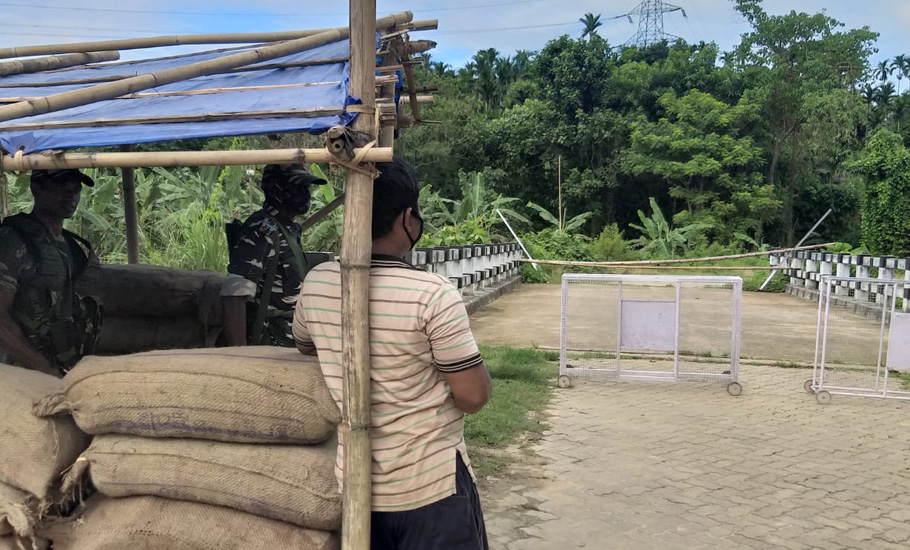
The aftermath
Beyond the blame game, the simmering conflict is taking a heavy toll on the livelihood of people like Chakma living along the disputed border. For them life will not be the same again, not at least anytime soon.
“My sales have dipped almost by 50 percent as I am not getting any order from my Mizo clients across the border,” rued Chakma, whose Rishita Momo House, established seven years ago, almost had an iconic status among the people on either side of the geographical divide.
There are many others like Chakma facing the brunt of the rift and distrust created by disputes over land between the two state governments.
Lailapur is a small chaotic bordering town. Around five kilometres off it towards Assam is located one of the biggest trading centres of Assam’s Barak Valley, Bhaga Bazar. The entire economy of the place is dependent on Mizoram.
“The trading centre now looks almost deserted. There are hardly any business transactions here these days as people from Mizoram have almost stopped coming,” says Rajib Mazumdar, an official of the State Bank of India’s local branch.
He said small traders were the worst affected. “Some big businessmen have tied up with their counterparts in Mizoram and started sending goods in bulk to them so that they could sell it among the people there. In the whole process, marginal traders of Bhaga Bazar are losing their businesses.”
Not only Lailapur or Bhaga Bazar, Congress MLA from Karimganj South Siddeque Ahmed says, the conflict has adversely affected the grassroots economy of the entire Barak Valley.
On the Mizoram side of the border, the impact of the conflict on the livelihood of bordering residents is as severe, if not more.
Lawmsanga, a resident of Aitlang village in Mizoram’s Kolasib district, planted broom and areca nut trees on about two hectares of land on a hillock near his village. On a relatively flat surface on the hill he also dug a pond for fish farming.
Lawmsanga’s family had been doing jhum cultivation in the area for over two decades. The jhum cultivation process involves clearing vegetation on a piece of land by setting bush fire. Farming is done for a limited period of time on the cleared land. It is then abandoned for a few years to allow regeneration of the natural vegetation and nutrients in the soil.
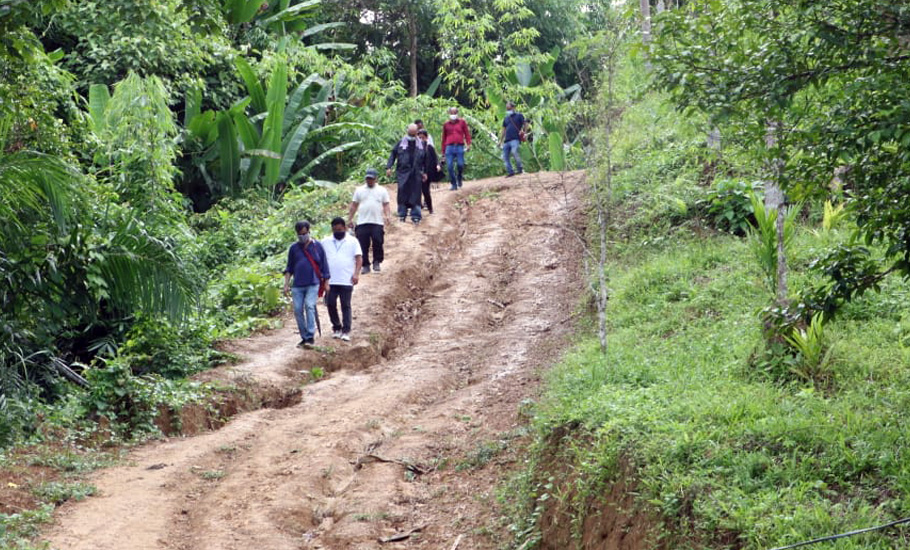
Since the farmers do not occupy a piece of land for farming for a prolonged period, no permanent land holding document is provided for cultivation. Only the respective village council issues a pass to a villager to cultivate a piece of land. The pass is issued only for farming, said Lalbiaktluanga, general secretary of the Zofa Welfare Organisation, an Aizawl-based civil-society organisation working to resolve the state’s long-pending boundary dispute.
The absence of a permanent land document makes it difficult for the villagers to establish their legal rights over the land they had been cultivating for years on rotation.
Taking advantage of this, Lawmsanga says, the Assam forest officials have now taken over his farm land claiming that the area falls under Assam. “I have not been allowed to visit my farm for almost a month now,” he says.
The Assam forest officials, however, say that the area falls within the “constitutional boundary” of Assam, a claim Mizoram strongly refutes.
A line in the sand
Assam and Mizoram share a 165-km long contested boundary. The dispute has been hanging fire since Mizo district (erstwhile Lushai Hills District) of Assam was carved out to create union territory of Mizoram in 1972. The UT was upgraded to a full-fledged state in 1987 after the signing of historic Mizo Peace Accord between the Mizo National Front led by Laldenga and the Centre.
The peace accord, however, failed to settle the boundary issue. It said the territory of Mizoram shall consist of the territory specified in section 6 of the North Eastern Areas (Reorganization) Act 1971. As per the act, the new UT will comprise territories which immediately before that day were in the Mizo District in the existing state of Assam.”
The Assam government, too, insists that the 1971 Act should be the basis of the boundary.
Mizoram, however, contested it as the accord remained ambiguous over the MNF’s demand for unification of Mizo-inhabited areas of other states to form one administrative unit.
Immediately after the accord was signed, Mizoram started insisting that the inner line of the Inner Line Reserved Forest demarcated in the 1875 notification under the Bengal Eastern Frontier Regulation (BEFR) of 1873 should be the basis of its border. It rejected the 1933 boundary demarcation which was the basis of its boundary drawn in the 1971 Act.
These contested claims often lead to skirmishes. But in the past it never snowballed into a full-blown gun battle between police forces of the two states as was witnessed last month. The latest flare-up totally changed the equation along the border.
This change means Lawmsanga, who was hoping to earn around Rs 80,000 by selling brooms this season and another Rs 50,000 by selling fish from his pond, will have no earnings.
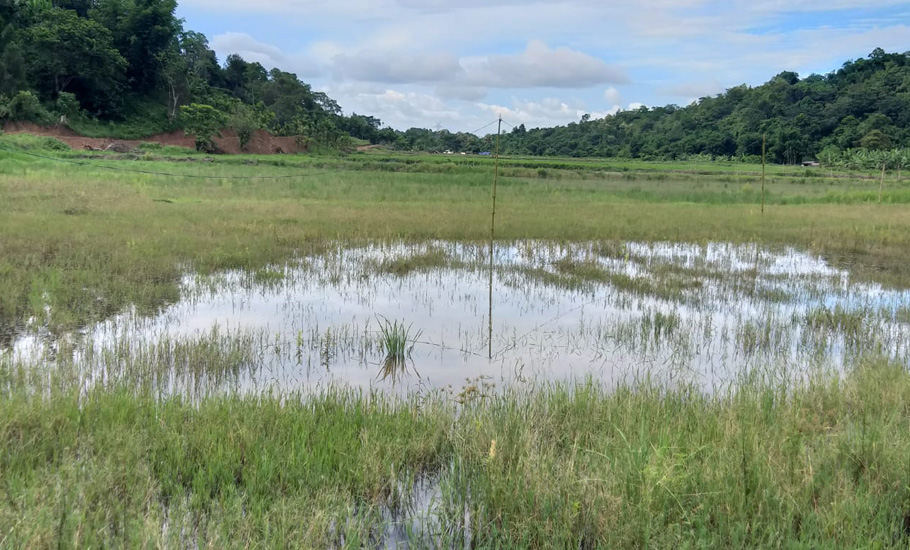
Impact on livelihoods
“I had reared some pigs. I am now selling them to run my family. But this way I will be able to manage barely for a few more months,” he said.
Mizoram rural development minister Lalruatkima said the government was aware of the plight of the villagers. But at the same breath he added that it has not yet chalked out any plan or scheme to compensate them for the loss of income due to the ongoing border conflict
There are around 18 families in Aitlang that claimed to have lost their livelihood as they suddenly found that their farmlands have turned into an “enemy territory” and hence out of bounds for them.
On behalf of the aggrieved villagers, human rights lawyer Lalrindika moved the National Human Rights Commission on August 17, seeking the NHRC’s intervention to restore the livelihood avenues of the affected villagers.
Similar complaints of livelihood loss can also be heard in other bordering Mizo villages such as Saihapui-V and Buarchep.
Chairman of Saihapui-V village Council Vanlalzawna says five families of his village were forced out of their farmland by the Assam Police.
Police barricades were placed on the village roads preventing movement of people from one side to another.
“My villagers are not allowed to go to their field on the hillock on the other side of the barricade,” Vanlalzawna says.
Eerie silence
Police barricades, CRPF outposts, camps of security forces of both the states and arms-toting policemen have completely changed the tranquil rural settings along the border. Their presence is only deepening the rift between the common people and creating mistrust.
In Buarchep, a large track of paddy field remained uncultivated this year. Tents of Mizoram police have come up there to protect the villagers. The police camps have been set up after a large contingent of Assam police and officials overtook farms and ponds of some villagers on July 10 claiming it was their territory, said Lalthanpuii, a village council member. (see video)
The Assam police have also set up camps a few metres away.
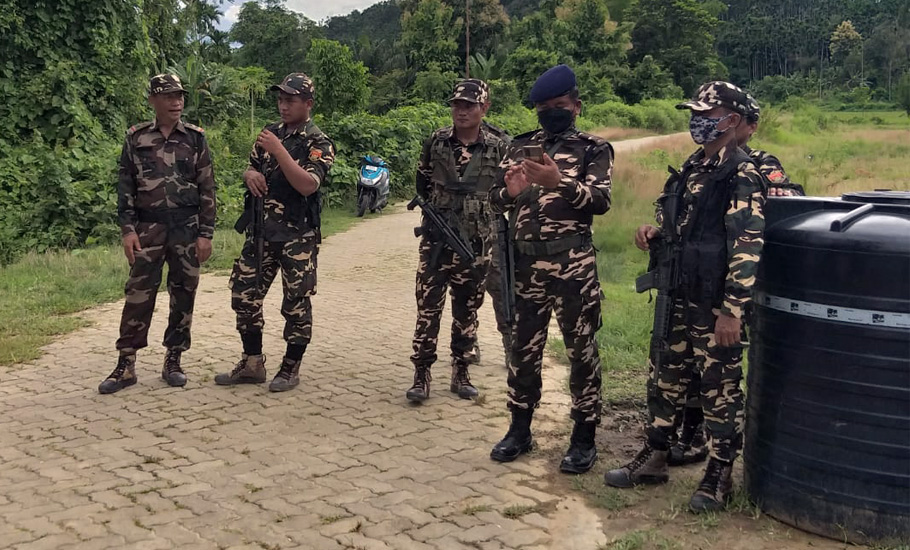
Squeezed in between, Kopthiangi, a local villager said, the village economy has been ruined.
The two state governments, however, did not look much bothered about this livelihood aspect of the conflict.
The issue did not find mention in the joint statement issued after the two sides met on August 5 in Aizawl, resolving to settle the tensions prevailing around the inter-state border and find solutions to border disputes through discussions.
The crucial meeting that lasted for about 15 minutes was intended to douse the flame. But it left the embers to simmer.
Such a half-hearted approach to a serious humanitarian dispute, the stakeholders of the conflict, feel would yield no good.
“Before finding any amicable and permanent settlement to the dispute, the governments should first try and restore the livelihood avenues of the affected villagers,” said Rosalynn Hmar of the Human Rights Law Network (HRLN) and the legal adviser of the Zofa Welfare Organisation.
Until then, she says, it’s only the poor villagers on both sides who will suffer.

